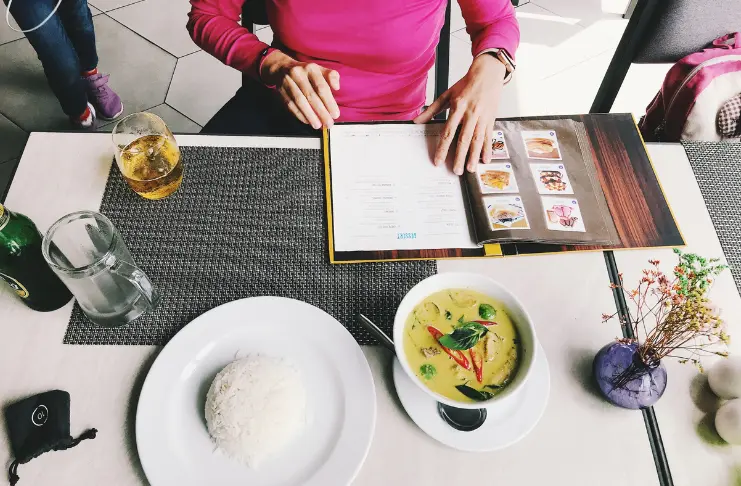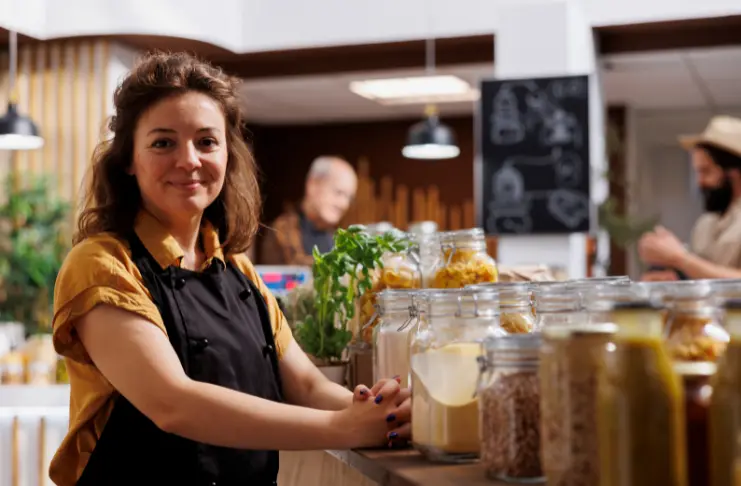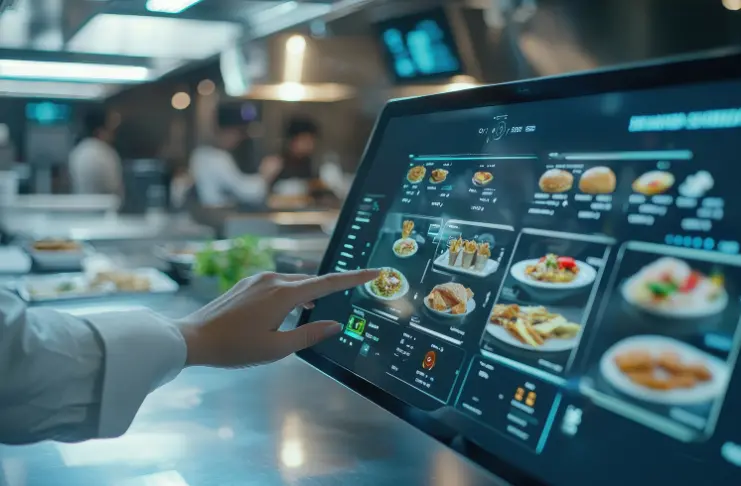
Malaysia’s restaurant industry has long reflected its cultural richness and urban growth. From neighborhood street-side stalls and hawkers to emerging homegrown chains and international franchises, dining out has become a core part of everyday routines and social lifestyles across the country.
The pandemic severely disrupted this space, but the recovery has been steady. As of Q3 2023, Malaysia’s services sector recorded a 7.6% year-on-year growth, with accommodation and food & beverage services contributing RM446.6 billion ($107.18 billion).
As the food industry adapts to shifting consumer expectations, digital ordering habits, and rising operational costs, it’s essential to understand where it is currently. This blog will deep dive into the current Malaysian restaurant statistics, key trends shaping its growth, and the evolving behavior of modern diners.
Malaysia Restaurant Statistics: Market Size and Growth
Malaysia’s restaurant market, a key component of its broader foodservice industry, has been steadily regaining momentum post-pandemic.
In 2025, the total value of the foodservice sector, which includes restaurants, cafés, and takeaways, is pegged at approximately $14.75 billion, with expected growth at 13.26% to reach $27.5 billion by 2030. In fact, between 2017 and 2022, the broader foodservice space recorded a 1.93% CAGR, with the total food service outlets rising from 8,706 in 2020 to 8,718 in 2022.
Quick-service and casual-dining businesses are taking the lead in this. QSRs are growing faster, especially in the café and fast-food corners, with forecasts showing these formats rising at a roughly 13.6% Y-o-Y growth rate from 2021 to 2022.

Segment-Wise Growth in the Malaysian Restaurant Industry
A. Quick-Service Restaurants
QSRs that include fast food, cafés, and grab‑and‑go eateries are thriving in Malaysia’s urban hubs. In 2022, they accounted for 24.5 % of total foodservice market value, second only to full‑service outlets. The segment grew thanks to the youth’s preference for fast food, as it is perceived as an affordable and convenient lunch option.
In fact, forecasts expect serious growth due to global chain expansion, with high-performing chains like KFC, McDonald’s, and Domino’s driving this trend.
B. Full-Service and Fine Dining
Full‑service restaurants like sit-down venues, upscale cafés, and bars led the profit sector in 2022 with 36.6 % market share. This segment is rebounding steadily with a projected 13 % CAGR through 2029, as consumers return to experiential dining. GlobalData reports that the FSR segment is also growing sharply, in some cases at 11.5 % annually, post-pandemic, as delivery preferences shift.
C. Cafes and Bars
Cafés and bars are riding the wave: higher alcohol consumption, tourism, and social culture are fueling 13 % annual growth in 2021-22 . The average order value is rising steadily, and many cafés continue innovating with premium brews and themed experiences to hold attention.
D. Cloud Kitchens
The fastest‑growing segment by far, cloud kitchens posted a 15.8 % CAGR as the Malaysian restaurant industry works to meet demand from food delivery apps. This low‑cost, agile model is expanding rapidly, driven by smartphone penetration (84% in 2022) and online ordering habits.
What are the Major Growth Drivers?
The most important factors driving the Malaysian restaurant industry include-
1. Economic Recovery & Disposable Income
A rebound in Malaysia’s economy, marked by a 3.6% GDP growth in 2023, has reinforced household incomes and consumer spending power. According to World Bank data, per capita income rose to $13,000 in real terms in 2023, encouraging more frequent dining out and higher spending per meal.

2. Tourism Rebound
Tourism is surging back, helping F&B outlets across the country. In 2024, Malaysia welcomed roughly 25.02 million international tourists who often spend significantly on food and beverages, 16.2% in 2024. Especially in urban areas and holiday destinations, tourism boosts footfall in casual-dining and fine-dining venues, leading to tremendous growth.
3. Digital Ordering & Cloud Kitchens
Convenience-driven dining is rising fast. The online food delivery market hit US$2.7 billion in 2023 and is projected to reach $6.1 billion by 2032, growing at a 9.5% CAGR. Similarly, the cloud kitchen market is expected to boom, partly due to a 13.2% CAGR projected across Southeast Asia through 2028.
4. Health & Conscious Eating Trends
Malaysians are becoming more health-aware, demanding clean labels, plant-based dishes, and lighter options. The plant-based food market is gaining real traction: plant-based proteins grew at a 22.6% CAGR from 2020 to 2024, and projections show 15% annual growth through 2029, reaching an estimated $267 million by 2029.
This doesn’t mean everyone’s going vegan, but flexible eating habits that include less meat or more variety are becoming normal. Restaurants are starting to adapt by offering lighter menus, meat alternatives, and clearer nutritional info.
EXPERT OPINION
Datuk Sunil Sachdev, owner of The Corner Sports Bar & Cafe in Petaling Jaya, notes that more people living in cities, especially working couples, are choosing to eat out more often, which is boosting demand for restaurants. He says, “While inflation impacts purchasing power, middle- and high-income Malaysians continue to dine out. Many opt for budget-friendly eateries but still prioritize convenience and experience. Malaysians are becoming more health-conscious, increasing demand for organic, nutritious, and plant-based options. In response, restaurants and cafes are introducing wellness-focused menus with fresh, wholesome ingredients.” |
Malaysian Restaurants: Consumer Behavior and Insights
Understanding consumer behavior is crucial for decoding Malaysia’s restaurant landscape. How often people dine out, what they crave, who they go with, and how they spend — all shape where and how restaurant operators should focus.
The following statistics will help determine the dining behavior of Malaysian consumers in 2025-
- 69% of 25-34-year-olds prefer street food and hawker stalls when dining out.
- 72% of respondents aged 55+ favour food courts over other venues.
- In Malaysia, 20% of men and women order from delivery apps 1-2 times per week.
- Fast food represents 78% of delivery orders in Malaysia, followed by Malay cuisine at 53%.
- Other cuisines, such as Western foods and Chinese dishes, are also gaining traction in Malaysia, amongst the top 5 favorite foods of Malaysians.
- Urban households are increasingly buying quick-prep items like frozen meals and sauces for the convenience of home-cooked meals.
- Interestingly, Gen Y orders food online 1.4 times per week, often more than Gen Z and Gen X. At the same time, upper-income consumers (RM10,000 and above) order 2-3 times weekly, while lower-income groups order only once a week.
- According to the Consumer Price Index released by the Department of Statistics Malaysia, the inflation rate for food at home is 0.5%, 6 times lower than that for dining out.
Future Trends in the Malaysian Restaurant Industry

The Malaysian F&B scene is evolving beyond kitchen innovation; it’s combining sustainability, technology, and lifestyle-driven dining. Here are some major trends making waves-
1. Innovative packaging
Malaysian food brands are increasingly using QR codes and NFC tech on packaging to share nutritional details, sourcing, and promotions. This smart-packaging approach improves transparency and consumer engagement.
2. Flexible packaging
The adoption of flexible packaging, such as stand-up pouches, sachets, and films, has surged. From 18.4 billion units in 2021, this segment is expected to exceed 20.2 billion units by 2025, growing annually by 2.9%. It offers better shelf life, portability, and lower costs, ideal for grab-and-go demand in Malaysia’s hot, humid climate.
3. AI-Driven Forecasting
Restaurants in Malaysia are increasingly using AI tools for stock and demand forecasting. MPC’s AI productivity initiatives aim to help SMEs adopt AI for meal-planning, waste reduction, and dynamic pricing to boost efficiency and operational workflows.
Conclusion
The country’s dining landscape is being shaped by a specific set of forces that include digital-first consumer habits, rising health consciousness, urban convenience culture, and a renewed focus on operational efficiency.
As the market grows steadily toward a projected $27+ billion by 2032, the rapid rise of quick-service formats and high dine-out frequency will determine how Malaysian restaurants operate and attract customers.
Frequently Asked Questions
A 2022 Rakuten Insight survey found 43% of Malaysians dine out several times a week, and 19% eat out daily.
Restaurant owners in Kuala Lumpur earn around MYR 97,525 per year (equivalent to MYR 47/hr), based on 2025 salary data.
Rice is Malaysia’s most-consumed staple food. The flagship dish, nasi lemak, is another widely eaten dish. It is served at any time of day and is popular at roadside stalls and restaurants.
There are over 5,000 fast-food outlets across Malaysia, including major chains like KFC, McDonald’s, Pizza Hut, Domino’s, and Burger King.








